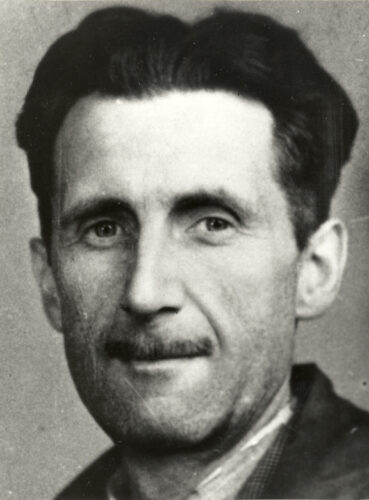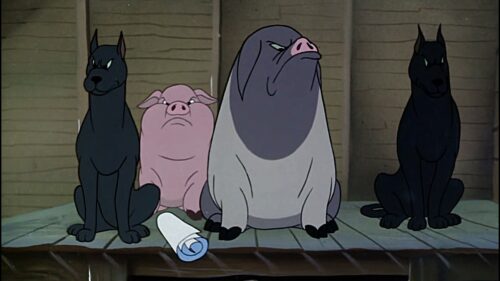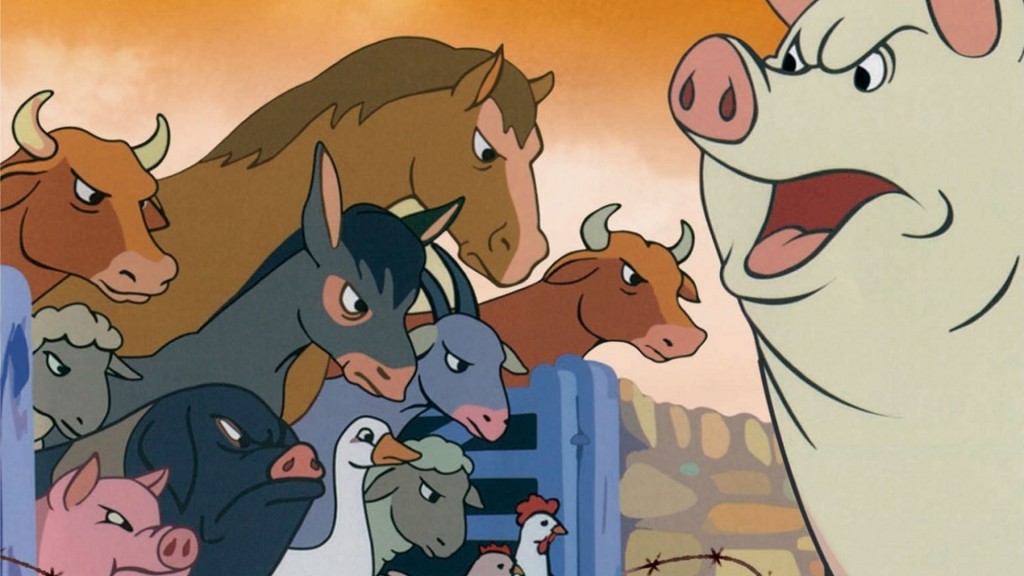Cel from “Animal Farm”. Public Domain.
The animated film adaptation of renowned British writer George Orwell’s Animal Farm is a significant piece of cinema history, not just for its artistic value, but also for the intriguing story behind its production. The film, released in 1954, was produced by documentarians John Halas and Joy Batchelor. However, what makes this film particularly interesting is the involvement of the Central Intelligence Agency (CIA) in its production.

The Novel
Animal Farm tells the story of a group of farm animals who rebel against their human farmer, hoping to create a society where the animals can be equal, free, and happy.
The story begins with Old Major, a prize-winning boar, who gathers the animals of the Manor Farm for a meeting. He shares a dream he has had in which all animals live together with no human beings to oppress or control them. After his death, three younger pigs — Snowball, Napoleon, and Squealer — formulate his main principles into a philosophy called Animalism.
The animals manage to defeat the farmer, Mr. Jones, in a battle, running him off the land. They rename the property Animal Farm and dedicate themselves to achieving Major’s dream. The cart-horse Boxer devotes himself to the cause with particular zeal, committing his great strength to the prosperity of the farm.
However, as time passes, Napoleon and Snowball increasingly quibble over the future of the farm, and they begin to struggle with each other for power and influence among the other animals. Napoleon uses nine attack dogs to chase Snowball from the farm and assumes leadership of Animal Farm, declaring that there will be no more meetings.
Napoleon begins expanding his powers, rewriting history to make Snowball a villain. He stages a great purge, during which various animals who have allegedly participated in Snowball’s great conspiracy meet instant death at the teeth of the attack dogs.
Despite the initial ideals of the rebellion, the story ends with the pigs behaving just like the humans they overthrew, illustrating the corruption of power and the cyclical nature of tyranny.

The CIA’s Involvement
The CIA’s interest in Animal Farm was part of a larger cultural war against communism that extended to a variety of forms of media. The agency saw the potential of Orwell’s Anti-Soviet communism allegory and decided to fund the film’s production. The CIA not only provided funding but also made changes to the original script.
In the late 1940s, the CIA’s Office of Policy Coordination (OPC) was established with the aim of curbing the proliferation of communism in Europe and the United States. This involved the strategic use of propaganda as a form of psychological warfare. Concurrently, Orwell had released his works, Animal Farm and Nineteen Eighty-Four. These novels, with their distinct anti-communist themes, were incorporated into the OPC’s broader campaign against Soviet influence.
A member of the CIA’s Psychological Warfare Workshop, part of OPC was sent to Sonia Orwell, the author’s widow, in 1950 to obtain the film rights to Animal Farm. The CIA saw that it could utilize this allegory as a means of exerting “soft power”.
The Film’s Production and Release
The CIA’s involvement in the production of Animal Farm film led to some significant differences between the book and the film. The most significant difference is the ending. In the book, the pigs, having initially led the rebellion against their human masters, become the new elite and behave just like their old masters; the other animals can only look on in despair. However, the film version, sponsored by the CIA, altered this ending. The film concludes with a revolt by the farm’s animals resulting in the overthrow of the pigs, who are symbolic of communists. There are also differences in the timeline, characters, and perspective between the book and the movie. These changes were likely made to align the film more closely with the anti-communist message that the CIA wanted to convey during the Cold War.

The film was directed by John Halas and Joy Batchelor and was produced by Halas and Batchelor. The film was released on December 29, 1954, in New York City, and on January 7, 1955, in London. C. A. Lejeune, a film critic, acknowledged “Animal Farm” as an exceptional piece of work, appealing to the senses and intellect. The film’s score by Matyas Seiber and Maurice Denham’s vocal talent, who single-handedly provided all the voices and animal sounds in the film, received specific commendation. The animation style has been likened to a more serious version of Disney. On Rotten Tomatoes, the film has garnered a rating of 69% based on the reviews of 13 critics.
Despite being a financial failure initially, taking fifteen years to generate a profit, the film quickly became a staple in classrooms across the United Kingdom, the United States, and other English-speaking countries like Australia, Canada, and New Zealand into the 2000s.
The Legacy
Animal Farm is a testament to the CIA’s involvement in cultural and artistic endeavors during the Cold War and its support of core Western values in the fight against communism. The film’s production story adds a layer of intrigue to Orwell’s timeless tale, making it a fascinating piece of both cinematic and political history.
Resource
Central Intelligence Agency
CIA.gov
*The views and opinions expressed on this website are solely those of the original authors and contributors. These views and opinions do not necessarily represent those of Spotter Up Magazine, the administrative staff, and/or any/all contributors to this site.

